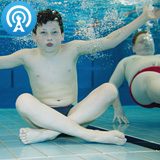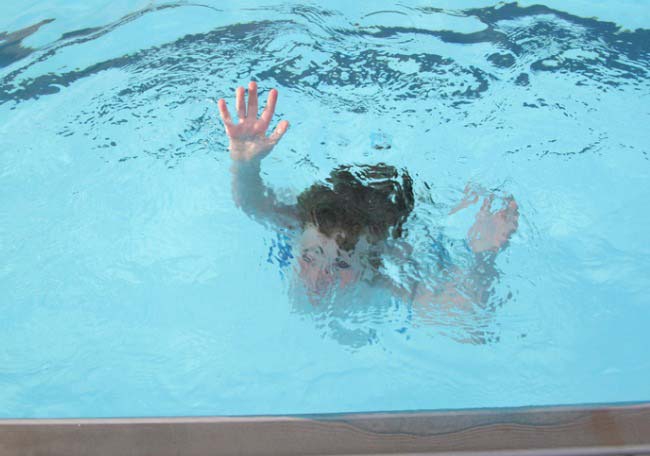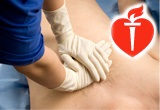Asfixia por inmersión

Referencia
1. Peden M, McGee K, Sharma K. The injury chart book: a graphical overview of the global burden of injuries. Geneva: World Health Organization, 2002.
2. Injuries and violence prevention: non-communicable diseases and mental health: fact sheet on drowning. Geneva: World Health Organization, 2003 (http:// www.who.int/violence_injury_prevention/other_injury/drowning/en/index.html).
3. Lu TH, Lunetta P, Walker S. Quality of cause-of-death reporting using ICD-10 drowning codes: a descriptive study of 69 countries. BMC Med Res Methodol 2010; 10:30.
4. Borse NN, Gilchrist J, Dellinger AM, Rudd RA, Ballesteros MF, Sleet DA. CDC childhood injury report: patterns of unintentional Injuries among 0–19 year olds in the United States, 2000–2006. Atlanta: Centers for Disease Control and Prevention, 2008.
5. Linnan M, Anh LV, Cuong PV, et al. Special series on child injury: child mortality and injury in Asia: survey results and evidence. Florence, Italy: UNICEF Innocenti Research Center, 2007.
6. Modell JH. Prevention of needless deaths from drowning. South Med J 2010; 103:650-3.
7. Cummings P, Mueller BA, Quan L. Association between wearing a personal floatation device and death by drowning among recreational boaters: a matched cohort analysis of United States Coast Guard data. Inj Prev 2011;17:156-9.
8. Bell GS, Gaitatzis A, Bell CL, Johnson AL, Sander JW. Drowning in people with epilepsy: how great is the risk? Neurology 2008;71:578-82.
9. Mitchell RJ, Williamson AM, Olivier J. Estimates of drowning morbidity and mortality adjusted for exposure to risk. Inj Prev 2010;16:261-6.
10. Branche CM, Stewart S, eds. Life-guard effectiveness: a report of the Working Group. Atlanta: Centers for Disease Control a nd Prevention, 2001.
11. Informações de Saúde: Ministério da Saúde do Brasil. Brasilia: Departamento de Informática do SUS, 2008 (http://www2.datasus.gov.br/DATASUS/index.php? area=02).
12. Web-based Injury Statistics Query and Reporting System (WISQARS). Atlanta: Centers for Disease Control and Prevention, 2009 (http://www.cdc.gov/injury/wisqars).
13. Van Beeck EF, Branche CM, Szpilman D,. A new definition of drowning: towards documentation and prevention of a global public health problem. Bull World Health Organ 2005;83:853-6.
14. Idris AH, Berg RA, Bierens J, et al. Recommended guidelines for uniform reporting of data from drowning: the “Utstein style.” Circulation 2003;108:2565-74.
15. Youn CS, Choi SP, Yim HW. Out-of-hospital cardiac arrest due to drowning: an Utstein Style report of 10 years of experience from St. Mary’s Hospital. Resuscitation 2009;80:778-83. Sterba JA, Lundgren CE. Diving bradycardia and breath-holding time in man. Undersea Biomed Res 1985;12:139-50.Orlowski JP, Abulleil MM, Phillips JM. The hemodynamic and cardiovascular r effects of near-drowning in hypotonic, isotonic, or hypertonic solutions. Ann Emerg Med 1989;18:1044-9.
16. Grmec S, Strnad M, Podgorsek D. Comparison of the characteristics and outcome among patients suffering from out-of-hospital primary cardiac arrest and drowning victims in cardiac arrest. Int J Emerg Med 2009;2:7-12.
17. Tipton MJ, Golden FS. A proposed decision-making guide for the search, rescue and resuscitation of submersion (head under) victims based on expert opinion. Resuscitation 2011;82:819-24.
18. Modell JH, Graves SA, Ketover A. Clinical course of 91 consecutive near-drowning victims. Chest 1976;70:231-8.
19. Szpilman D. Near-drowning and drowning classification: a proposal to stratify mortality based on the analysis of 1831 cases. Chest 1997;112:660-5.
20. Polderman KH. Application of therapeutic hypothermia in the ICU: opportunities and pitfalls of a promising treatment modality. Part 1: indications and evidence. Intensive Care Med 2004;30:556-75.
21. Venema AM, Groothoff JW, Bierens JJ. The role of bystanders during rescue and resuscitation of drowning victims. Resuscitation 2010;81:434-9. Szpilman D, Soares M. In-water resuscitation — is it worthwhile? Resuscitation 2004;63:25-31.
22. Watson RS, Cummings P, Quan L, Bratton S, Weiss NS. Cervical spine injuries among submersion victims. J Trauma 2001;51:658-62.
23. Szpilman D, Handley A. Positioning the drowning victim. In: Bierens JJLM, ed. Handbook on drowning: prevention, rescue, and treatment. Berlin: Springer-Verlag, 2006:336-41.
24. Orlowski JP, Szpilman D. Drowning: rescue, resuscitation, and reanimation. Pediatr Clin North Am 2001;48:627-46.
25. Vanden Hoek TL, Morrison LJ, Shuster M, et al et al. Part 12: cardiac arrest in special situations: drowning: 2010 American Heart Association Guidelines for Cardiopulmonary Resuscitation and Emergency Cardiovascular Care. Circulation 2010;122:Suppl 3:S847-S848.
26. Soar J, Perkins GD, Abbasc G, et al. European Resuscitation Council Guidelines for Resuscitation 2010. Section 8. Cardiac arrest in special circumstances: electrolyte abnormalities, poisoning, drowning, accidental hypothermia, hyperthermia, asthma, anaphylaxis, cardiac surgery, trauma, pregnancy, electrocution. Resuscitation 2010;81:1400-33.
27. International Life Saving Federation Medical Committee. Clarification statement on cardiopulmonary resuscitation for drowning. Leuven, Belgium: International Life Saving Federation, April 3, 2008 (http:// www.ilsf.org/sites/ilsf.org/f iles/f ilef ield/ILS%20Clarification%20Statement%20on %20Cardiopulmonary%20Resuscitation %20-%203%20April%2008.pdf ).
28. Baker PA, Webber JB. Failure to ventilate with supraglottic airways after drowning. Anaesth Intensive Care 2011;39:675-7.
29. Manolios N, Mackie I. Drowning and near-drowning on Australian beaches patrolled by life-savers: a 10-year study, 1973-1983. Med J Aust 1988;148:165-71.
30. Claesson A, Svensson L, Silfverstolpe J, Herlitz J. Characteristics and outcome among patients suffering out-of-hospital cardiac arrest due to drowning. Resuscitation 2008;76:381-7.
31. Szpilman D, Elmann J, Cruz-Filho FES. Drowning classification: a revalidation study based on the analysis of 930 cases over 10 years. Presented at the World Congress on Drowning, Amsterdam, June 26–28, 2002. abstract.
32. Gregorakos L, Markou N, Psalida V, et al. Near-drowning: clinical course of lung injury in adults. Lung 2009;187:93-7.
33. Diamond W, MacDonald RD. Submersion and early-onset acute respiratory distress syndrome: a case report. Prehosp Emerg Care 2011;15:288-93.
34. Kochanek PM, Bayir H. Titrating oxygen during and after cardiopulmonary resuscitation. JAMA 2010;303:2190-1.
35. Weiss SJ, Muniz A, The effect of prior hyperthermia on the physiological response to norepinephrine. Resuscitation 2000;45: 201-7.
36. Beerman S, Lofgren B. Automated external defibrillator in the aquatic environment. In: Bierens JJLM, ed. Handbook on drowning: prevention, rescue, and treatment. Berlin: Springer-Verlag, 2006:331-6.
37. Quan L, Cummings P. Characteristics of drowning by different age groups. Inj Prev 2003;9:163-8.
38. Rafaat KT, Spear RM, Kuelbs C. Cranial computed tomographic findings in a large group of children with drowning: diagnostic, prognostic, and forensic implications. Pediatr Crit Care Med 2008;9:567-72.
39. Oehmichen M, Hennig R, Meissner C. Near-drowning and clinical laboratory changes. Leg Med (Tokyo) 2008;10:1-5.
40. Eggink WF, Bruining HA. Respiratory distress syndrome caused by near- or secondary drowning and treatment by positive end-expiratory pressure ventilation. Neth J Med 1977;20:162-7.
41. Foex BA, Boyd R. Towards evidence based emergency medicine: best BETs from the Manchester Royal Infirmary: corticosteroids in the management of near- drowning. Emerg Med J 2001;18:465-6.
42. Van Berkel M, Bierens JJ, Lie RL, et al. Pulmonary oedema, pneumonia and mortality in submersions victims: a retrospective study in 125 patients. Intensive Care Med 1996;22:101-7.
43. Wood C. Towards evidence based emergency medicine: best BETs from the Manchester Royal Infirmary: BET 1: prophylactic antibiotics in near-drowning. Emerg Med J 2010;27:393-4.
44. Kapur N, Slater A, McEniery . Therapeutic bronchoscopy in a child with sand aspiration and respiratory failure from near drowning — case report and literature review. Pediatr Pulmonol 2009;44:1043-7.
45. Cubattoli L, Franchi F, Coratti G. Surfactant therapy for acute respiratory failure after drowning: two children victim of cardiac arrest. Resuscitation 2009;80: 1088-9.
46. Takano Y, Hirosako S, Yamaguchi T, et al. Nitric oxide inhalation as an effective therapy for acute respiratory distress syndrome due to near-drowning: a case report. Nihon Kokyuki Gakkai Zasshi 1999;37:997-1002. (In Japanese.).
47. Gauger PG, Pranikoff T, Schreiner RJ. Initial experience with partial liquid ventilation in pediatric patients with the acute respiratory distress syndrome. Crit Care Med 1996;24:16-22.
48. Warner D, Knape J. Recommendations and consensus brain resuscitation in the drowning victim. In Bierens JJLM, ed. Handbook on drowning: prevention, rescue, and treatment. Berlin: Springer-Verlag, 2006:436-9.
49. Guenther U, Varelmann D, Putensen C, Wrigge H. Extended therapeutic hypothermia for several days during extracorporeal membrane-oxygenation after drowning and cardiac arrest: two cases of survival with no neurological sequelae. Resuscitation 2009;80:379-81.
50. Spicer ST, Quinn D. Acute renal impairment after immersion and near drowning. J Am Soc Nephrol 1999;10: 382-6.
51. Eich C, Bräuer A, Timmermann A, et al. Outcome of 12 drowned children with attempted resuscitation on cardiopulmonary bypass: an analysis of variables based on the “Utstein Style for Drowning.” Resuscitation 2007;75:42- 52.
52. Gilbert M, Busund R, Skagseth A, Nilsen PÅ, Solbø JP. Resuscitation from accidental hypothermia of 13.7°C with cardia c arrest. Lancet 2000;355:375-6.
53. Moran K, Quan L, Franklin R, Bennett E. Where the evidence and expert opinion meet: a review of open-water: recreational safety messages. Int J Aquatic Res Educ 2011;5:251-70.
54. Quan L, Bennett E, Branche CM. Interventions to prevent drowning. In: Doll LS, Bonzo SE, Sleet DA, et al., eds. Handbook of injury and violence prevention. New York: Springer, 2007:81-96.
Comentarios
Para ver los comentarios de sus colegas o para expresar su opinión debe ingresar con su cuenta de IntraMed.








